Content
- Patagonia Goes Urban
- The Christmas Lights on the Lucerne Wooden Bridge
- USM Furniture Made of Discarded Objects
- Envision Sustainable Products with AI
In the last article, I took a critical stand against the optimistic views that AI could help solve climate change issues. Despite I still hold that position combined with a slight distrust of humanity I wanted to experiment by myself with text-to-image tools to find out how they can be employed to innovate in product design in the context of sustainability. The outcome is fairly impressive and the fictional case studies are presented below together with their making off.
Patagonia Goes Urban
Imagine Patagonia expanding its clothing portfolio beyond the outdoor segment:
- Step 1: I searched for reference pictures of the garment design and the photographic style that I had in mind to feed Midjourney.
- Step 2: I included a reference picture functioning as the “brand guidelines” of Patagonia. For instance, I realised that the logo is always placed in small sizes on the top right of the jackets or very big on the back, but with exceptions. Midjourney was not very accurate in replicating these rules, but it captured the overall look & feel of the brand.
- Step 3: first grid outcome: ultra-realistic editorial fashion photography of Patagonia jacket in “placeholder” style –ar 4:5. Sorry I had to hide the style due to copyright reasons.
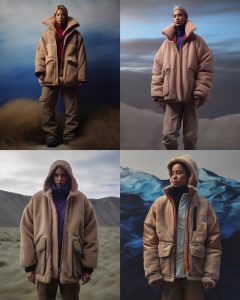
- Step 4: select the best variant, upscale and add logo.
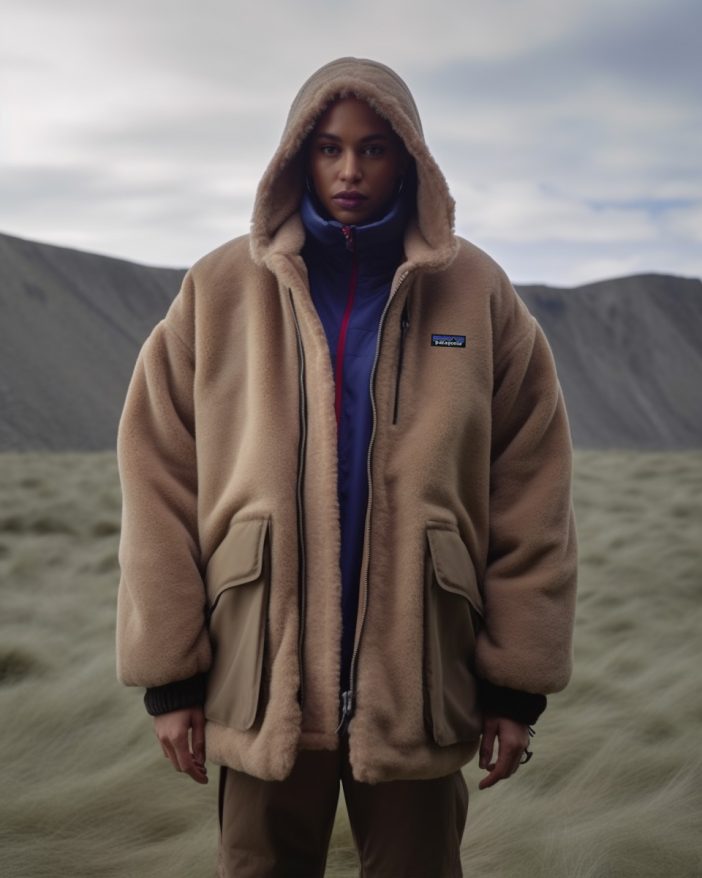
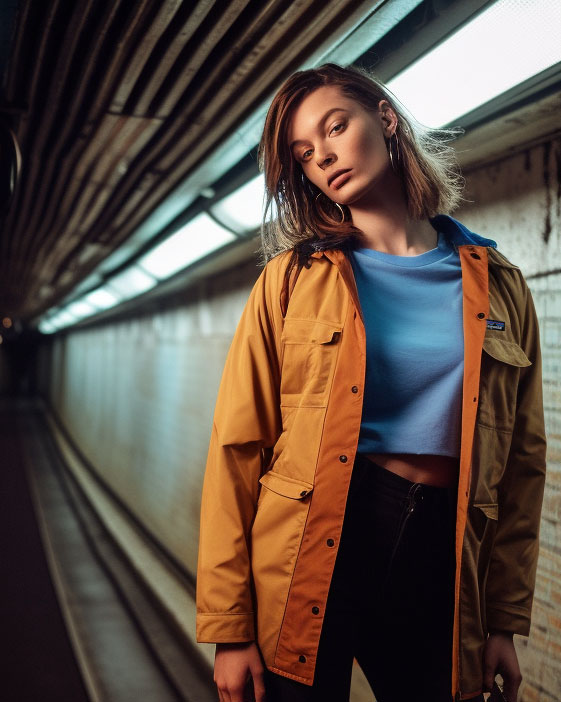
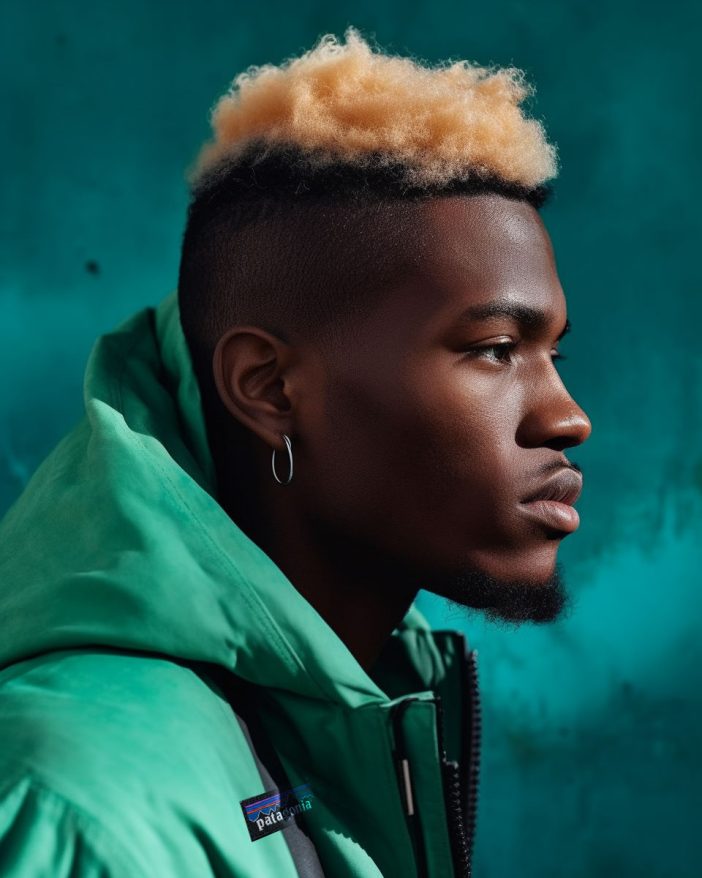
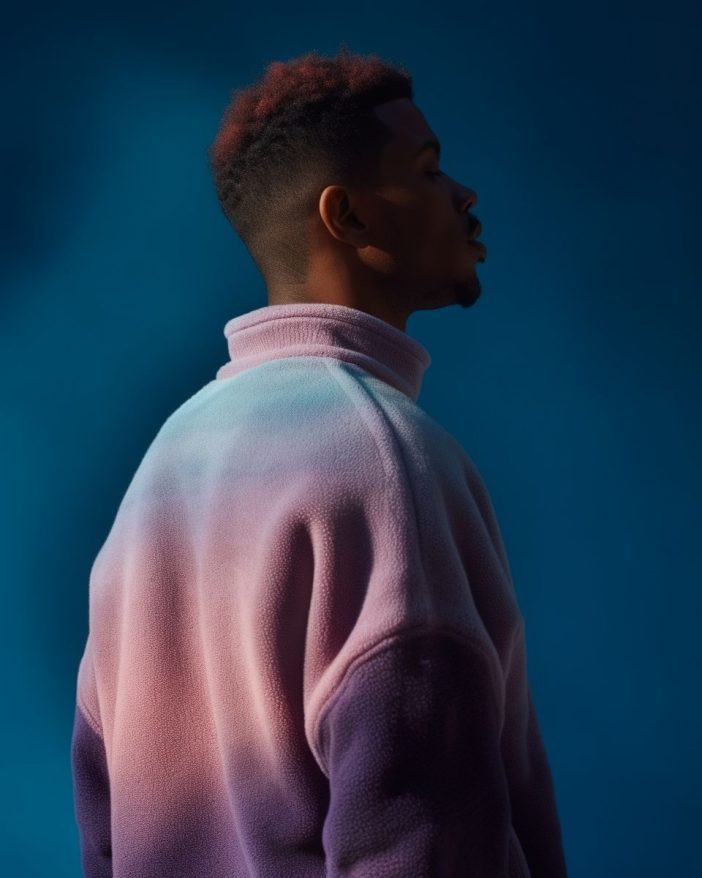
The Christmas Lights on the Lucerne Wooden Bridge
Imagine if the Christmas lights of the Lucerne wooden bridge (“Kappelbrücke”) were made of discarded water bottles, debris materials, discarded Styrofoam etc.
Step 1: The power of Midjourney is proportional to the size of its database. By trying a few prompts with the words “chapel bridge” or “Kappelbrücke” it was clear that the language model didn’t “know” so well the bridge.
Step 2: Not performing so well, it was necessary to feed the database with images of the bridge. Therefore I searched for images and inserted them into Discord.
Step 3: include any reference picture of the discarded objects that you would like to see.
Step 4: first grid view out of the prompt: Kapellbrücke made of lights from discarded water bottles, debris, discarded styrofoam, glass, accent light.
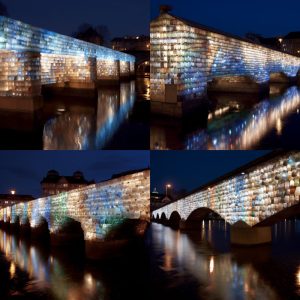
Step 5: quick spoiler: this case study was not as successful as the other two and I assume that this was caused by the low number of images of the bridge in the Midjourney database and the low contrast making it hard to depict the thin pillars and architectonic details. Therefore I manually adjusted the reference images of the bridge in Photoshop in an attempt to teach Midjourney how the bridge actually was.
Step 6: After a multitude of prompts I selected some images and here are the upscaled outcomes.
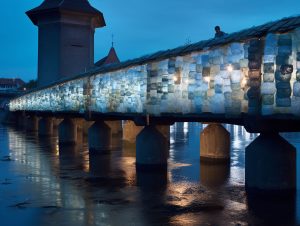
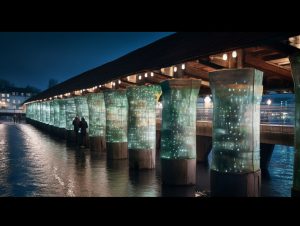
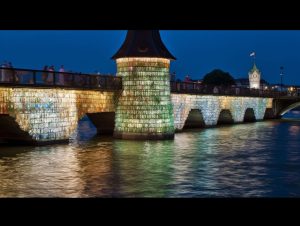
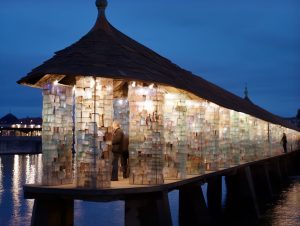
USM Furniture Made of Discarded Objects
Imagine the USM furniture made of discarded products in a modern interior:
Step 1: feed Midjourney with the USM furniture that you prefer. I included a USM system with shelves and storage suitable for a large living room. Also, include one or two images of the desired interior that you would like to see. Again included some images of the materials that you want to see upcycled.
Step 2: Include the reference images in the prompt and then the text. My first attempt with recycled cans was a complete fail, but the next one led to the result I wanted: colorful USM furniture made of discarded PET bottles, and debris, in a Bauhaus / brutalist style interior.
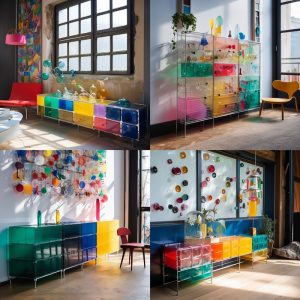
Step 3: select the image you prefer and upscale:
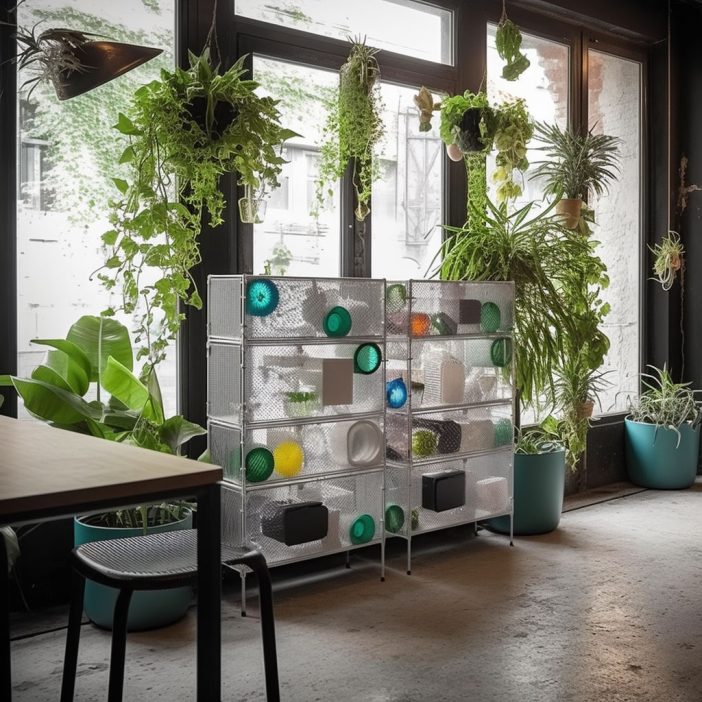
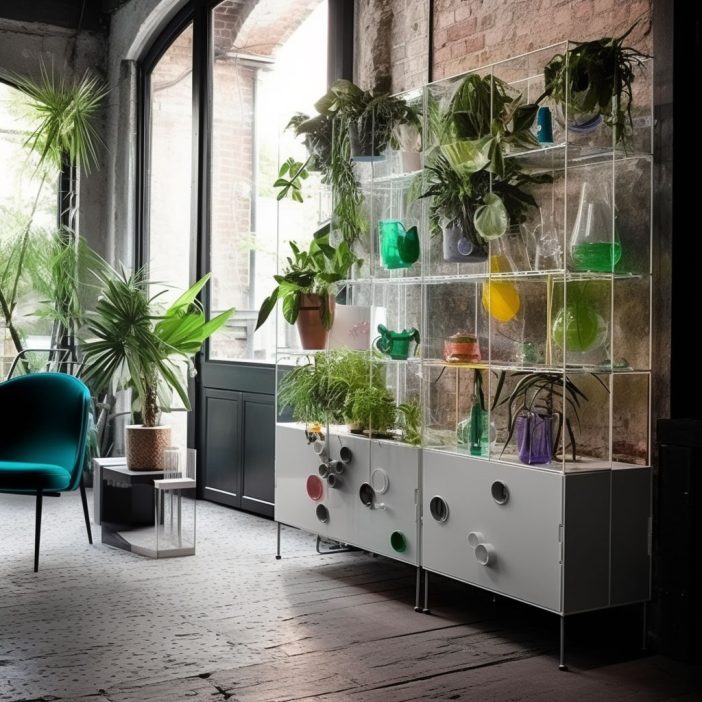
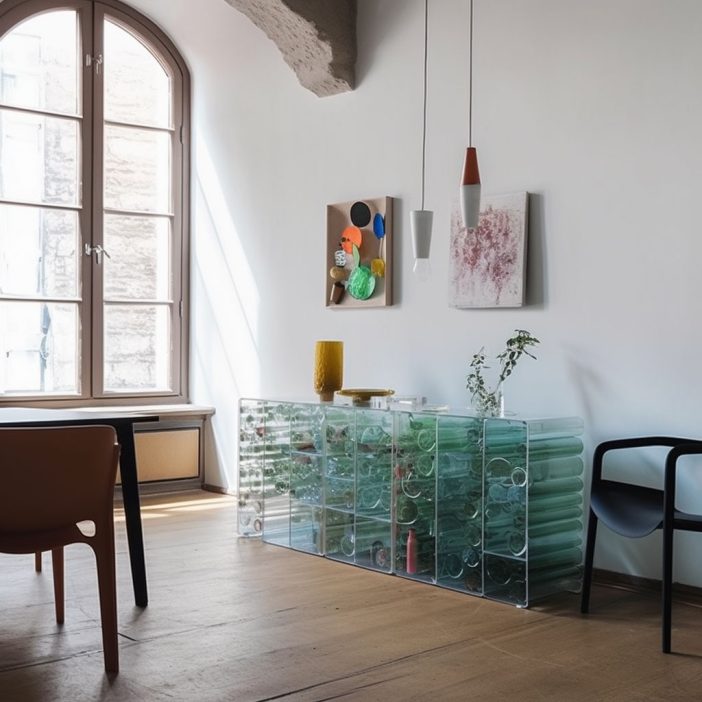
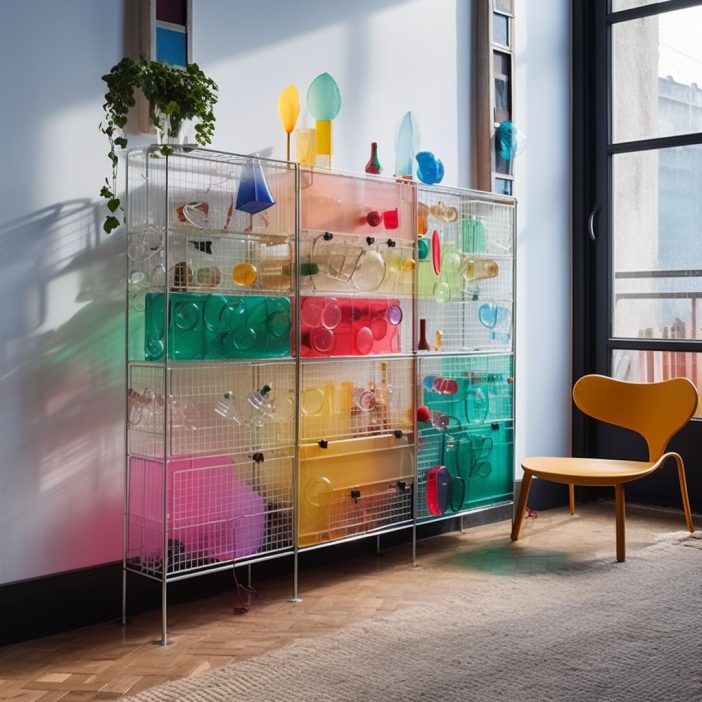
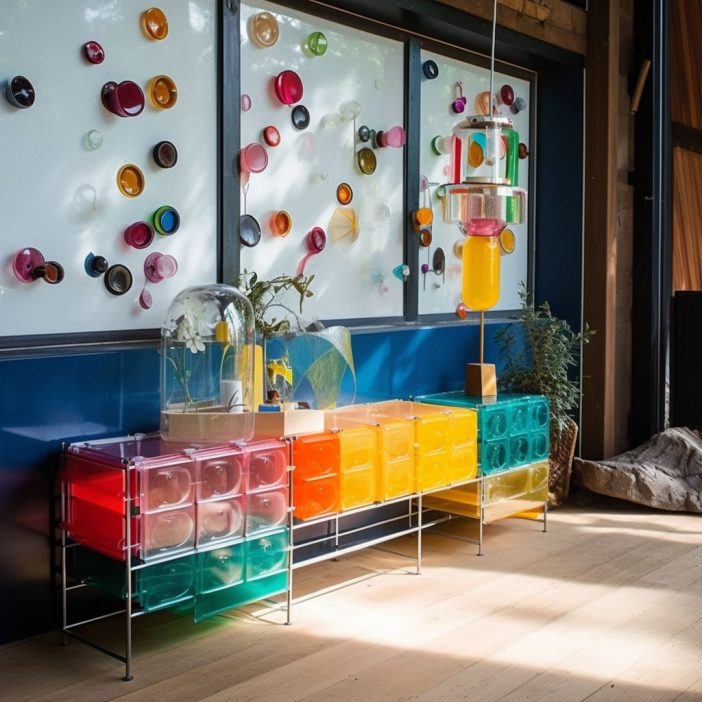
Envision Sustainable Products with AI
I hope that this article was an inspiration for anyone working in the design field or anyone curious about impactful use cases for AI.
To be honest, some of the results (i.e., the USM series) were surprisingly impressive to me.
I would like to retrieve some of those discarded materials today and try to build one of those products!
Read more
6 hacks on how to use ChatGPT and Midjourney in UX design
Improve your UX design work with AI
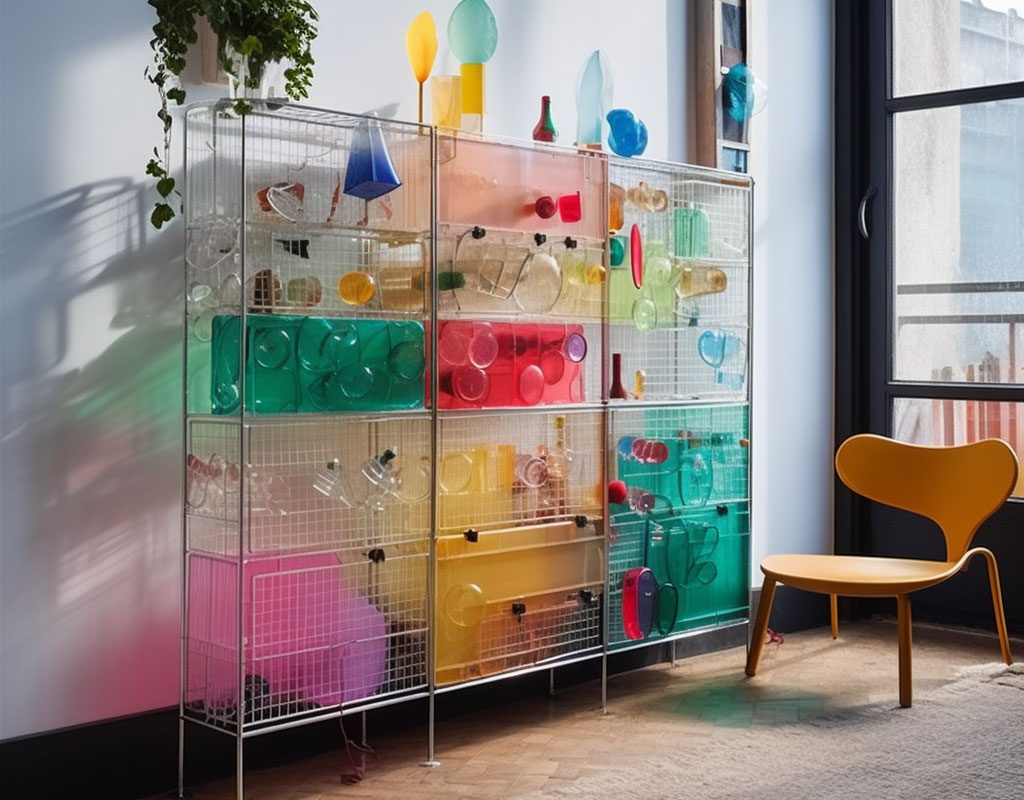
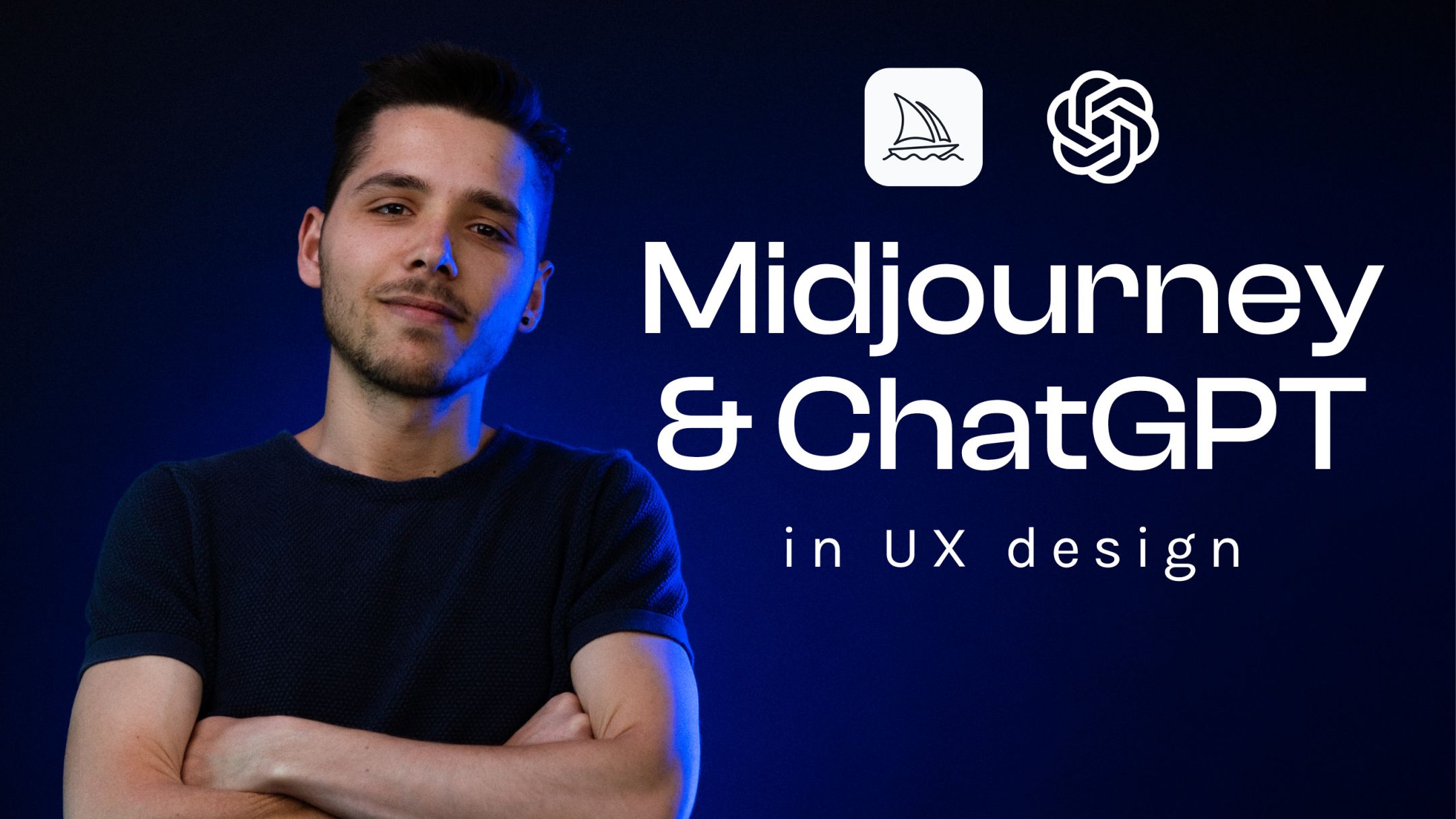
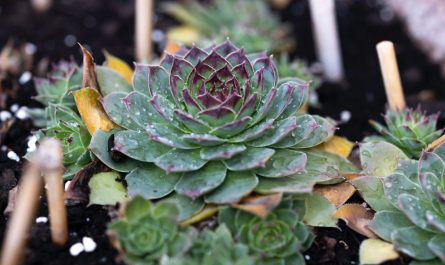
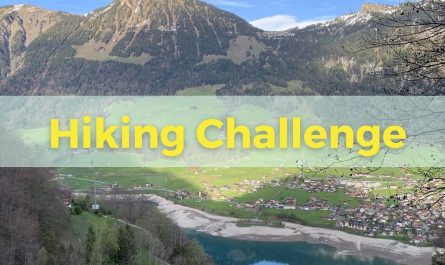
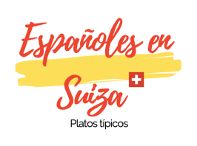
Wow, would love to see the Lucerne bridge lighting in a more sustainable way – really cool!
And the USM furniture is quite impressive – would certainly give also office spaces a nice kick 😉
Thank you Jana, I totally agree with you! 🙂